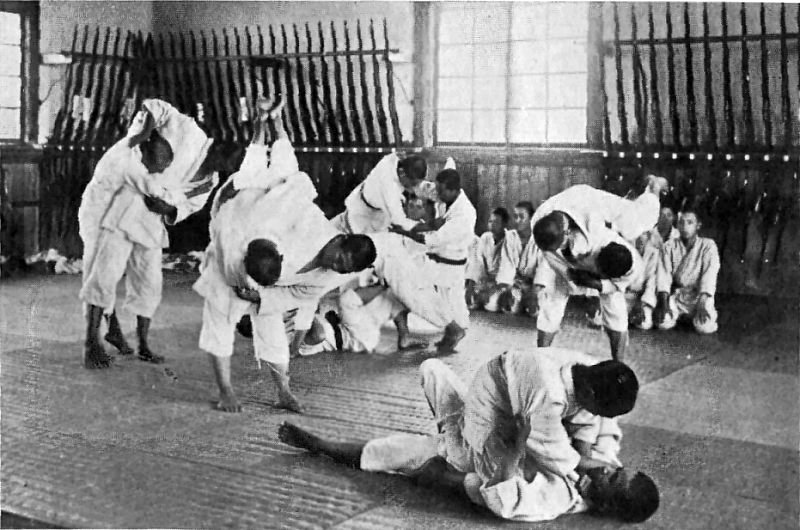Combat will never be a solved game. That’s part of what makes it interesting: No two fights are exactly like, and neither are two combat sports matches. Wrestling has different rules than kickboxing or pankration, and sometimes there are no-rules situations, and sometimes rules change or are negotiated. That’s part of why jiu-jitsu keeps evolving, and why understanding the history of jiu-jitsu gives you perspective about where the art might go in the future.
When people say “jiu-jitsu,” they mean different things: to me, I take the broadest possible lens. Jiu-jitsu is a philosophy of finding the most efficient and effective solution to a problem that’s always evolving. In that sense, you’re part of this story — together we’re co-creating a set of solutions.
That’s how I like to think of it, anyway, and it’s why I did this five-class series about the history of jiu-jitsu, starting by talking about early Japan and continuing up until today. I want to thank everyone who joined in live on Zoom, and I’ve now put the whole series up on YouTube. Each class is a little over an hour, and I hope people enjoy them.
Let me also acknowledge first that we’re learning more about this all the time, and we have historians to thank for it. Sources like Tufy Cairus, Roberto Pedreira, Wendy Rouse and Robert Drysdale are updating our understanding constantly. Without these sources, and many more, these presentations wouldn’t be possible. Through the project, I also became acquainted with the Martial History Team, which is also doing cool work.
Please read their stuff, buy their books, listen to the podcasts I’ve done with them (except Pedreira: Hit me up, sir) and support Drysdale’s film Closed Guard: The Origins of Jiu-Jitsu in Brazil when it comes out later this summer. You can check out much of their work using the links in my BJJ History: A Starting Point post, which has a bunch of history resources.
The first class is a big overview, from the 12th century to today, and each of the other four are deeper dives into specific periods and geographies. Here’s what you’re in for:
Class 1: Jiu-Jitsu History 101: Hundreds of Years in One Hour
Want to get the very quick-and-dirty overview of how hundreds of regional arts in Japan came to be jujutsu, which developed into judo, which was exported throughout the world, and evolved into Brazilian jiu-jitsu, which exploded onto the scene in America with the first Ultimate Fighting Championship in 1993 and now is practiced by tons of awesome folks, including you? Catch the replay of this class here on YouTube. You can also see the presentation slides for class one.
Class 2: Jiu-Jitsu in Japan: Samurai, Kano Jiu-Jitsu and Judo. (Watch the re-play here). Was jiu-jitsu a samurai art, and if so, what did it look like? How did Japan’s shogunate history affect martial arts? Why was Jigoro Kano such a giant of martial arts history, and world history? And how did jiu-jitsu become judo, and then become jiu-jitsu again? Check this class out for the answers, plus a bunch of wild fight stories from Tokugawa- and Meiji-era Japan. Here’s the presentation for class two.
Class 3: Jiu-Jitsu Around the World: Count Koma, the Suffragettes and the Barnstorming Diaspora. Watch the replay here. Who was Mitsuyo Maeda, and how did he come to Brazil? Did a 4’11” woman really teach a troupe of British womens’ suffragists jiu-jitsu so they could fight oppression (spoiler: yes!). Where around the world did the Japanese diaspora go, and how did martial arts follow them? Come to this class for all this and more, plus crazy images and stories from the era. Here’s the presentation for class three.
Class 4: Enter the Gracies, Part One: From Carlos & Helio until Carley & Rorion come to America. No-rules fighting, relentless marketing, prolific breeding and game-changing everything. This covers the time period from the first moment Helio Gracie saw jiu-jitsu to the Gracies’ first travels to America, we cover everything from the first time the Gracies trained to Carley and Rorion (re)-introducing jiu-jitsu to America. Here’s the presentation for class four.
Class 5: The Rise of Modern Sport Grappling: IBJJF, ADCC, and More. How did we go from demonstrations with unclear rules, to fights with no rules, to rules that everyone (mostly) follows? How did vale tudo become gi and no-gi tournaments? Why is a prominent sheikh involved? And just who is the greatest of all time, and how do we know? If competition is your thing, you’ll want to check this out: We rank the top five jiu-jitsu competitors of all time as of July 1, 2020 during this class, as well as give you links of great matches to watch. Here’s the presentation for class five.
Like William Faulkner wrote in Requiem for a Nun, “The past is never dead. It’s not even past.” Or, if you prefer Bob Marley, “If you know your history / you will know where you’re coming from.”
The past doesn’t define us, but it does inform our respective journeys. I had great fun learning the material I’m sharing here, and I hope you enjoy it as well.

